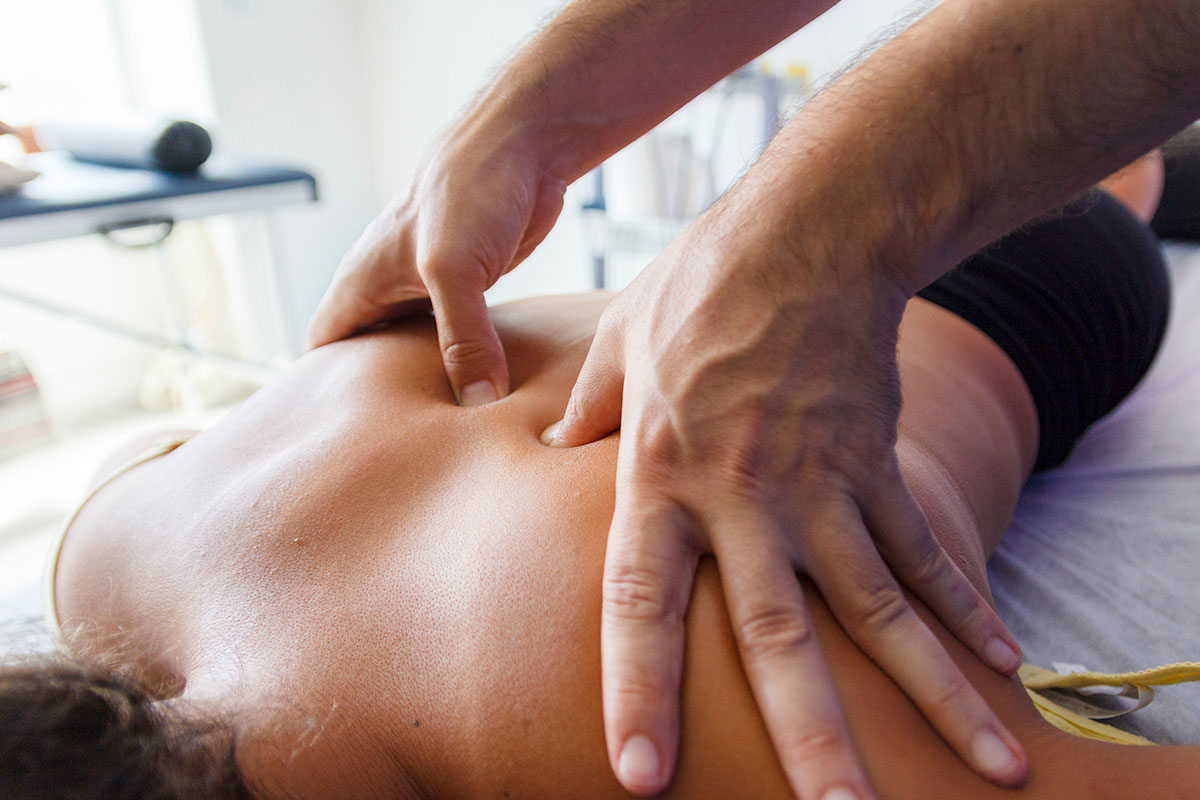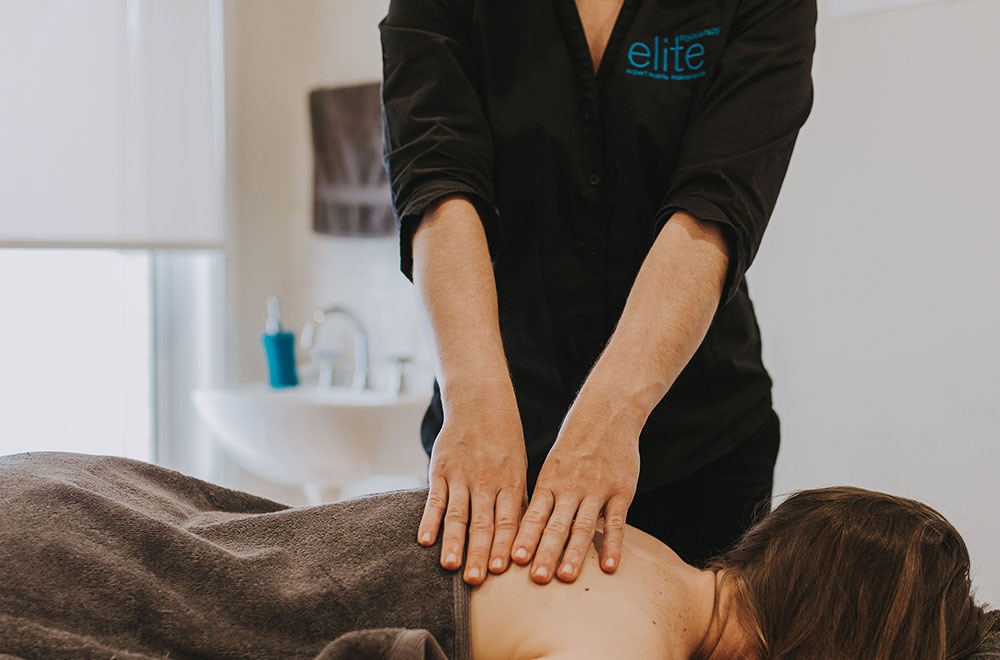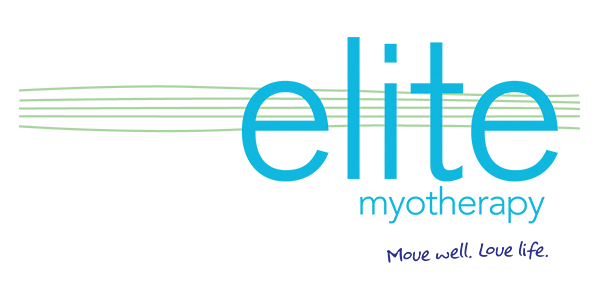
Deep Tissue Massage
Deep tissue massage involves deep muscle compression to try and remove any “knots” or adhesions within the muscles. Often the Myotherapist will use deep tissue massage as one of our techniques to affect a specific muscle or area of pain or tightness in the body.
This targets the trigger points (tight spots) in the deeper layers of your muscles to “unstick” the muscle fibres that are causing the knot to occur.
Deep tissue massage targets the deep layer of the muscle in an attempt to affect specific muscle fibres.
It is usually applied to specific areas that need attention as opposed to a remedial massage where the whole body is treated in the session.


What Is Deep Tissue Massage?
In most cases, pressure is applied lightly at the start to warm up the muscle, then more specific techniques are applied, such as stripping and friction.
Stripping involves applying deep pressure over the length of the muscle fibres – creating a gliding feeling. Friction involves applying pressure across the grain, which releases muscle tension and realigns soft tissue.
People may feel tender after this type of treatment, but this will only last 1 – 2 days maximum. This isn’t a relaxation massage, however we want you to feel relaxed and not leave our clinic in discomfort. If performed correctly then the pain will shift in two sessions. If pain persists any longer, you should contact your therapist and let them know.
It is also recommended when having a deep tissue massage that you increase your water intake after the treatments. This enables your muscles to release toxins into the bloodstream and flush them out of your system.
Who Can Benefit From A Deep Tissue Massage?
Deep Tissue Massage therapy can help those with conditions such as:
Back pain and poor posture
Deep Tissue Massage provides many benefits for back pain sufferers. Massage increases blood flow and circulation. This decreases muscle tension which not only feels great, but reduces your pain, increases flexibility and helps you to sleep.
It’s easy to assume that back pain is spine-related, however many problems are caused by muscle strain. This is especially common for injuries caused by heavy lifting or a sudden unnatural movement. In these cases, back muscles become strained or torn and the surrounding areas becomes inflamed. Inflammation can cause muscles to to spasm, and make it difficult to perform regular movements such as tying up your shoelaces.
Massage helps the inflamed muscle to heal, your aches and pains to decrease and your quality of life to improve.
Whiplash
Whiplash places an incredible strain on your sternocleidomastoid muscles. These are the muscles on the sides of your neck which you use to tilt and turn your head. Sudden movements incurred in a car collision or a collision on the sports field can tear these muscles.
We use deep tissue massage to relieve symptoms of tightness, stiffness, soreness, swelling, headaches, dizziness and ringing in the ears.
Shin Splints
Shin splints are often caused by tight calf muscles which add stress to your lower leg. Repeated force from stop/start activity such as running, tennis and basketball can cause increased stress in this area.
We use deep tissue massage to treat shin splints by stretching the muscles to release tension and tightness. By applying light to medium pressure, we are able to improve circulation to the lower leg by moving lymphatic fluid. This carries metabolic waste away from your body, which relieves pain and prevents scar tissue from building up.
Knee Pain
Knee pain is often caused by overuse of imbalances from neighboring muscles. Chronic pain at the front of the knee, or below of behind the kneecap can be caused by overuse of one or more of the quadricep muscles. Pain at the side of the knee can be caused by iliotibial band. Pain behind the knee can be caused by overuse of either the hamstrings or the gastrocnemius calf muscle.
Deep tissue massage enables circulation, reduces swelling and tension, treats scar tissue and enables your muscles to work as they should.
Shoulder Pain
Weak muscles, poor posture, sudden intense activity and lack of mobility are all contributors to shoulder pain and injury. Massage is an effective treatment for most causes of shoulder pain as the muscle and tissue adhesions require pressure to break up. This gentle pressure provides relief for your pain and allows you to regain mobility.
Frozen shoulders are also treated with massage. This increases oxygen in your blood which enables the muscle toxins to be flushed out and circulation to improve.
Plantar Fasciitis
Plantar fasciitis is a thick connective tissue which runs along the bottom of your foot, from your toes to your heel. This acts as a shock absorber, which can tear after excessive strain. We use deep tissue massage to apply deep finger pressure through short strokes on your fascia, achilles heel, and calf muscles. This releases muscle tension and loosens the muscle, removes toxins and enables correct blood flow and oxygen and treats scar tissue.
Those with injury and soreness from exercise and sports will benefit greatly from a deep tissue massage:
- Overworked muscles
- Sports injury
- Strains
- Tears
- Muscle pain
- Build-up of lactic acid
- Before and after preparation and recovery.
These are some of the following professional athletes which have relied upon our services:
- The Australian Open
- Australian Olympic Team
- Essendon Football Club
- Melbourne Storm Rugby League Club
Why Choose Elite Myotherapy for Deep Tissue Massage?
Elite Myotherapy have been providing deep tissue massage throughout Melbourne for over 20 years. Our general manager, Sam Rigby, is a respected leader in the field of Myotherapy, having previously lectured in Myotherapy and held the roles of Vice-President and Professional Development Coordinator of the Myotherapy Association Australia.
All of our massage therapists are members of professional associations and hold $5million professional indemnity cover. Our Myotherapists are fully qualified and hold advanced diploma of remedial massage or myotherapy, or bachelor qualifications.








